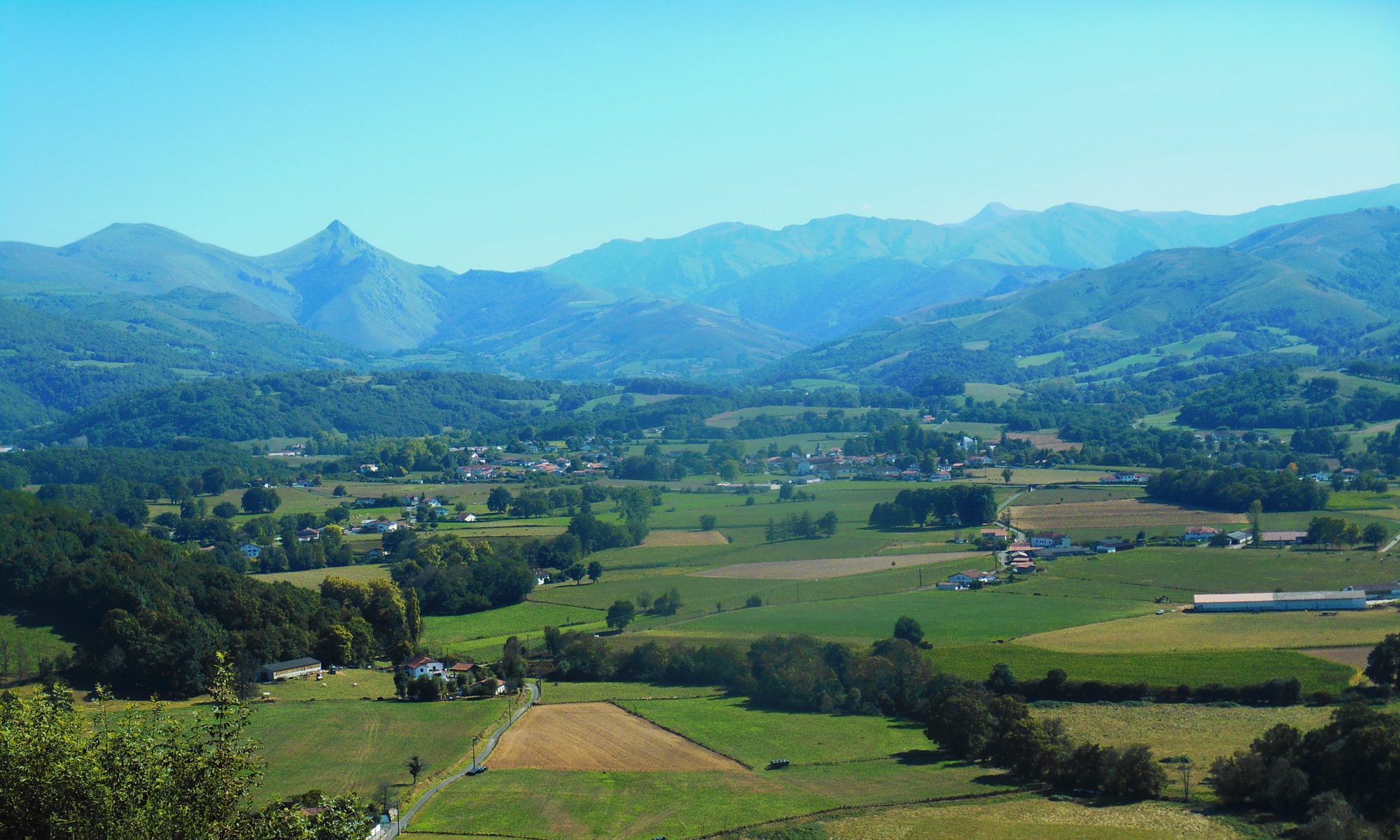Here is a site discovered in 1965, rectangular in form, occupying roughly 2.5 hectares, 200 metre long and between 120 and 95 metres wide, with rounded corners, orientated North-East/South-West, in the locality called Burgochaharre (in Basque: old village), near where the road fords the river Laurhibar, which flows below the site.
The defensive embankment towers 5 to 7 metres above the ancient protective ditch, now a village byway.
There is evidence of the presence of a small garrison, probably of auxiliary troops, from the last quarter of the 1st century BC, tasked with developing the recently pacified country, in particular the road network and its way stations, with supervising and controlling the Roman way across the Pyrenees linking Bordeaux and Astorga in Spain, and maybe with collecting the annone (direct tax funding their supplies).
The camp gradually evolved into a roadside vicus (village), a civil village and staging post on the road to Spain, and after the medieval and modern occupations, the village of Saint-Jean-le-Vieux would be established on the ancient secondary urban centre called Imus Pyrenaeus in the 3rd century.
The excavations scheduled from 1966 to 1975, then two sounding campaigns in 1978 and 1983 (1999 and 2002 for the medieval domain), revealed an inhabited site with buildings, pebble-paved alleys and Roman baths. These thermal baths, the first of which is thought to date from the first quarter of the 1st century AD, and extended a little before 30 AD, are now recognized as the oldest in the South-West of France.
Life at the way station probably ended in the early years of the 5th century AD (407) when the Pyrenees were crossed by invading barbarians (Vandals, Suebi and Alans).
Theories to date (listed as a historical monument on 27/09/1984).
